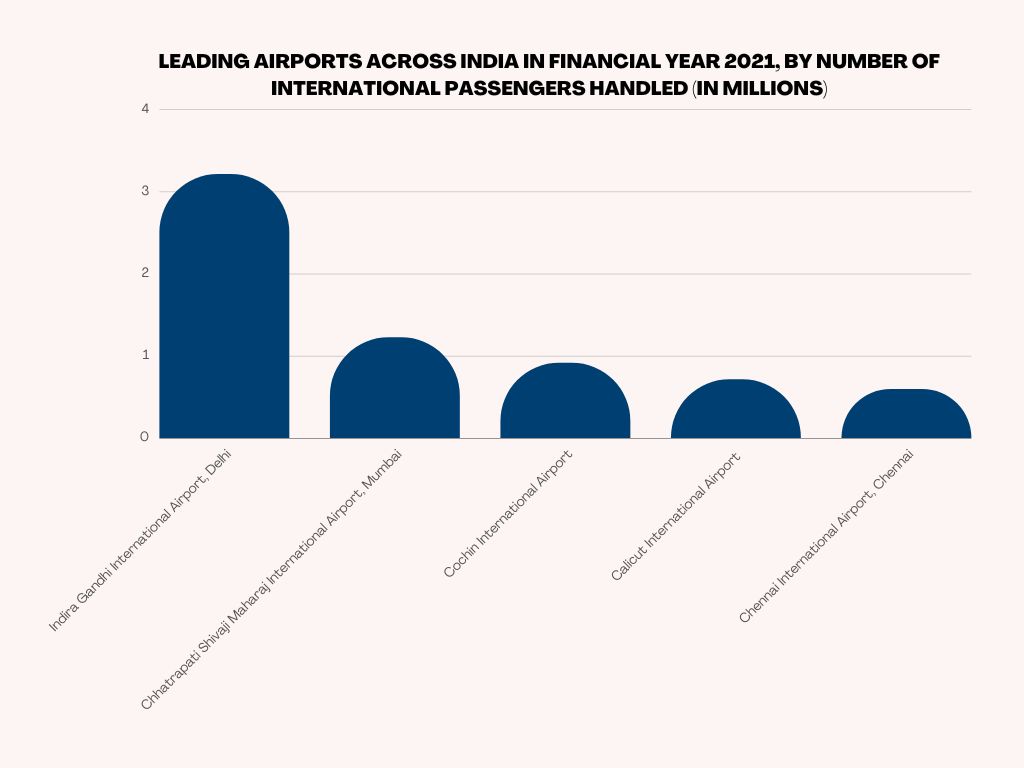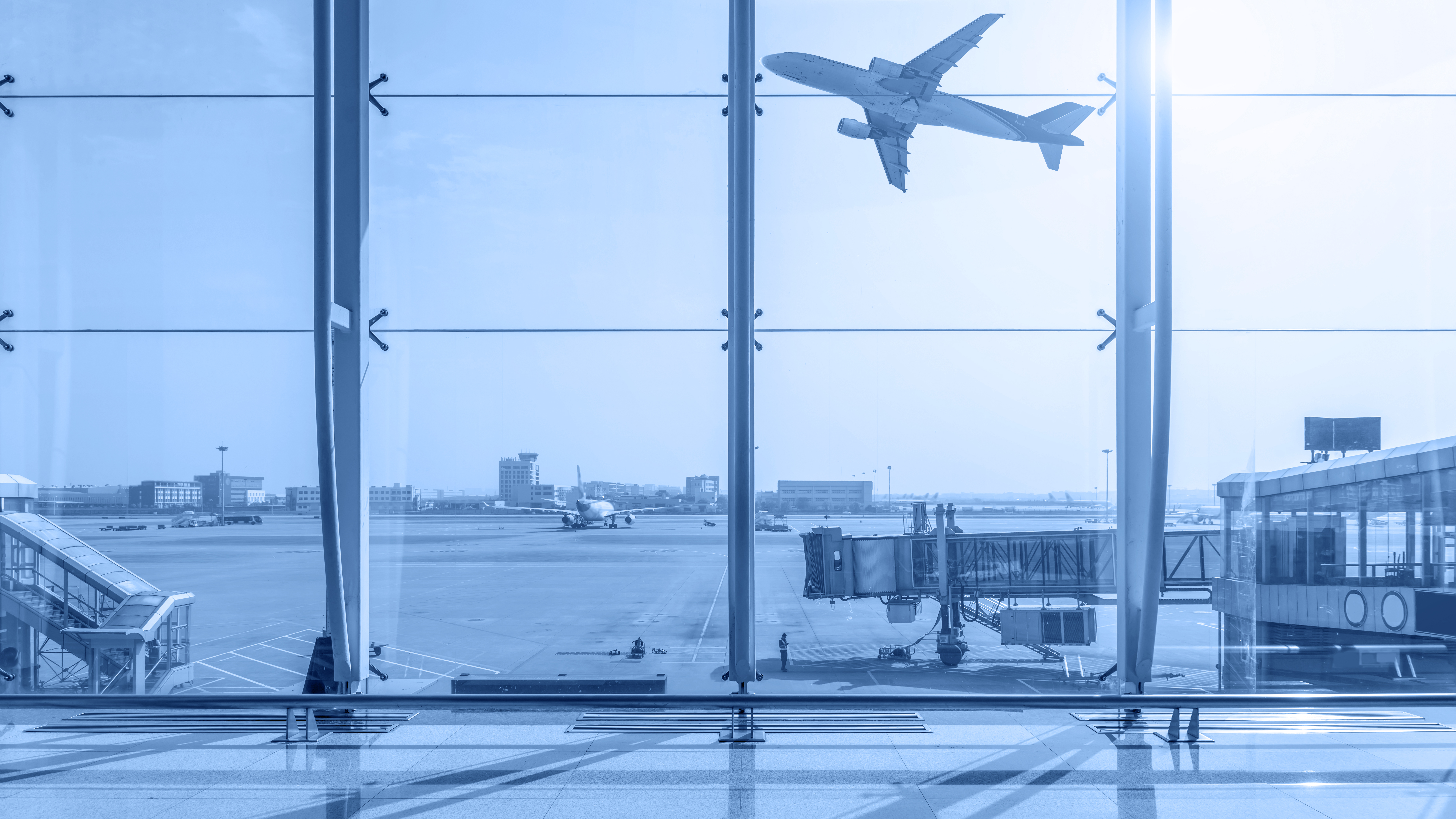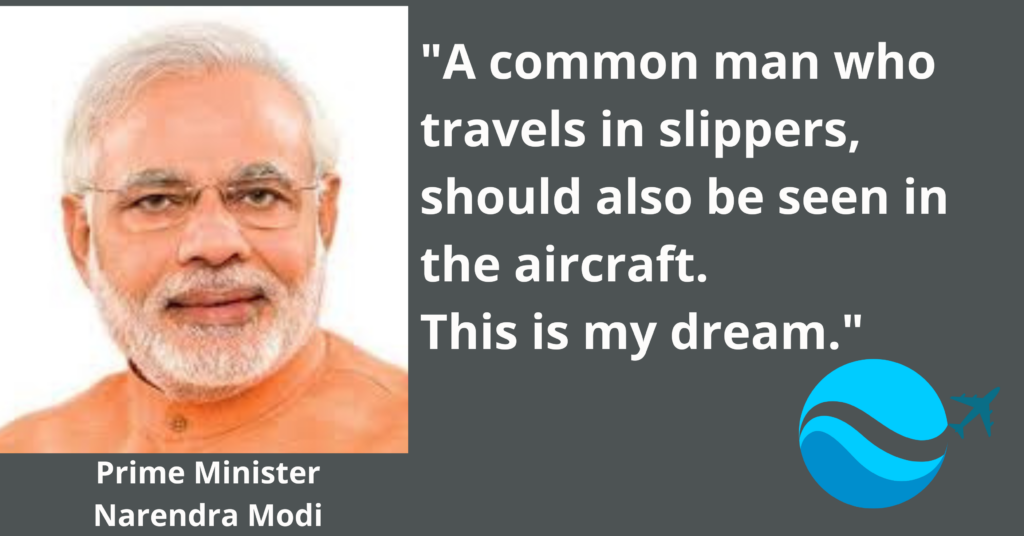Indian Aviation Industry – Things you need to know
Aviation sector not only provides worldwide transportation network, but it is a crucial factor that affects business and tourism of any country. It is essential for promoting economic progress, especially in emerging nations. Globally, the air transportation sector supports 29 million employment. Over the past three years, India’s civil aviation sector has experienced some of the nation’s fastest growth. India has overtaken the UK to become the third-largest domestic aviation market in the world, and by 2024, it is predicted to surpass it. According to the reports, India aims to have 220 new airports by 2025
By enhancing people’s recreational and cultural opportunities, air travel enhances quality of life.and also contributes to raising living standards and reducing poverty, for instance through tourism and bringing business opportunities.
Growth forecasts for India indicate a trebling of passenger demand by 2037 when some 500 million people are expected to fly to, from or within India. Already, aviation supports 7.5 million Indian jobs and INR 30 billion of GDP (1.5% of the economy).
Union Minister for Civil Aviation Jyotiraditya Scindia said that ‘Growth opportunities for airlines are tremendous as passenger volume will double from 200 million currently to 400 million over the next seven to 10 years”
However, IATA’s (The International Air Transport Association) (IATA)director general and CEO, Alexandre de Juniac, stated: “While it is simple to locate Indian travellers who want to fly, it’s quite challenging for airlines to earn money in this market. Airlines must be able to profitably meet rising demand in order for India’s social and economic growth to proceed. India needs to solve the infrastructural problems that impede growth and the national regulations that violate international norms and raise the cost of access.
Travel Daily, Mili, 2018)
Its quick expansion has been fueled by a variety of reasons, such as:
• Increasing demand for travel for both business and pleasure due to rising GDP, disposable money, and living standards.
• Lower airfare prices. Since the middle of the 1970s, advances in airline efficiency and increasing competition have driven down global airfares by around 40% in real (i.e., inflation-adjusted) terms10.
• As more individuals take long-distance trips and do business in nations with more hospitable political and social situations, the average distance traveled tends to grow.
The fact cannot be ignored that India is rushing towards growth, even though there are improvements in the Indian Aviation Sector. Bureaucrats are investing crores in upgrading the aviation sector with the help of business leaders. Rakesh Jhunjhunwala, who passed away recently in one of his last interviews during the launch of Akasa Airlines where he was one of the primary investors, was very upbeat about the Indian Aviation market.
The Economic Benefits of Air Transport: A Study On How it Helps in Ensuring Growth
Promotes World Trade
By enhancing access to key markets and enabling global manufacturing, air travel enables nations to participate in the global market. Additionally, the use of air travel promotes commerce with other nations that produce different commodities and services and encourages nations to specialize in fields in which they have a comparative advantage.
70% of firms consider air services to be critical for business travel (a survey of financial and business service companies)
Promotes Tourism
In many developing nations, where it is a large contributor to the balance of payments and a considerable source of foreign cash, tourism has the potential to create strong links with other industries.
The spending of tourists coming by aircraft supports a significant number of employment in the tourism sector and directly supports jobs in airlines and airports.Moreover, bringing foreign footprints to the places across nations caters cultural expansion by improving tourist sectors flourish and creating an epoch in the foreign market.
Around 40% of international tourists now travel by air.
Improves Business Productivity & Regulates Supply Chain
Global productivity is increased by air travel as a result of the expansion of the market, thus helping companies boost corporate activities. Because of this, businesses are better equipped to specialize in fields where they have a competitive edge and to take advantage of economies of scale to save costs. By expanding markets, air services make businesses more competitive and push them to improve their efficiency.Moreover, as part of their just-in-time delivery systems, several businesses employ air transportation to minimize delivery periods. This enables them to deliver goods to customers swiftly and dependably while also lowering prices.
Brings Quality Investment
By enabling effective networking and cooperation between businesses based throughout the world, air travel may serve as a catalyst for innovation. Viable air transport linkages are one of the major factors influencing where multinational corporations choose to invest, which makes air travel a catalyst for investment both into and out of nations and regions.. A robust transportation system may also encourage businesses to invest more in R&D. For instance, expanding the breadth of prospective markets enables the spread of fixed costs of innovation across higher sales.
Enhances Consumer Society by bringing Sustainability Across Value Chain
Because of the improved accessibility of travel links and for the local airport communities, air travel enhances consumers’ wellbeing. When thinking about environmental effects on things like air quality, noise, and congestion around airports, they must be taken into account.
Facilitates Growth of eCommerce
Promoting the growth of e-commerce by, for instance, letting businesses to ship online orders between nations swiftly and reliably and enabling the storage of goods in massive warehouses to cut down on retail and distribution expenses.
Promotes Real Estate Growth
Any location that develops a new airport is likely to see an increase in the city’s real estate growth. By improving the city’s reputation as a business destination, an airport will also increase demand for commercial real estate. Additionally, a locality’s increased economic activity will result in more job possibilities, which will immediately increase the demand for rental homes.
New Airports Plans & Connectivity Scopes In India
Mumbai’s Sindhudurg Airport
The airport in Sindhudurg district, approximately 27 kilometres from the Mumbai-Goa highway, was opened on March 5, 2021. This new airport is close to some of Maharashtra’s most well-known tourist attractions, including Tarkali Beach, a famous diving location, and Sindhudurg Fort. The airport can now accommodate 400 passengers, while commercial operations have not yet begun.
Rajkot’s Hirasar Airport in Gujarat
In order to build a new greenfield airport close to Hirasar in the Rajkot district, the state government of Gujarat and the Airport Authority of India signed a Memorandum of Understanding in January. Additionally, the Cabinet has authorized the construction of a new airport on property of 1,025 hectares close to NH-8B, which connects Ahmedabad and Rajkot, at a cost of Rs 1,400 crore.
Maharashtra’s Navi Mumbai International Airport
According to the Center for Asia Pacific Aviation, the project, which spans more than 1,160 hectares in the Kopra-Panvel Area of the Mumbai Metropolitan Region (MMR), is anticipated to be operational by 2023. The project has received official clearance from the state government to be developed by Mumbai International Airport Pvt. Ltd. (MIAL), which is led by GVK(founded by GunupatiVenkata Krishna).
Kerala’s Sabarimala Airport
The Kerala state government has decided to open a greenfield airport in the Cheruvally estate region of the Kanjirappally taluk after the airport project proposed by KGS Group in Aranmula was halted as a result of concerns by local residents and environmental groups. The project’s goal is to facilitate travel by air for pilgrims to the Sabarimala Ayyappa shrine and commuters (mainly NRIs) from Central Travancore.
Airport at Sriperumbudur, Chennai
The Chennai Airport may one day serve as a hub for airlines operating in the South East Asia area, according to the Airports Authority of India (AAI). With a 2015 crore investment, the new international and national airports are finally finished. In comparison to the airports in the neighboring states, the connectivity with sea ports and the availability of significant freight routes would be an advantage for the airport to become a hub.
Struggles in India’s Aviation Sector
The recently launched UDAN programme by the Indian government intends to better meet the current and future demand for air travel in under sourced regions. This is being undertaken in collaboration with the Airport Authority of India to upgrade the infrastructure at these locations and to encourage airline firms to lower the cost of air travel for a wider range of people. However, there are some struggles that we need to identify inorder to bring quality growth.
- The stable growth of connectivity is in danger due to the airline industry’s financial difficulties in India. Additionally, the sharp increase in fuel prices and the drop in the value of the Indian rupee are growth inhibitors for India’s carriers.
- There is no doubt that India has the ability to build efficient infrastructure. Yet the work is not finished. Passenger counts will increase dramatically in the upcoming years. but, infrastructure must not be a barrier to meeting the demands of both the economy and travelers.
- Lack of Technology advancements and delayed and time consuming checking bring chaos in the airport. Indian airports need to aggressively popularize the DigiYatra initiative, which uses One ID initiative, biometric identification (similar to India’s Aadhar identity card) to save time by eliminating the need for repeated document checks in airports.
- Since India’s population density is up to 8 times higher than the norm for the world and several of its Tier I cities are among the top cities in the world in that statistic, land acquisition continues to be one of the key obstacles to growth in these crowded cities. The practical approach would be to spread out capacity more evenly or to adopt novel ideas like “distributed airports.”
- For the bulk of the people of the country—nearly 40% of whom are middle-class aspirants—air travel remains pricey.
- The Indian Aviation sector is facing a new threat. The domestic aviation industry has been witnessing significant growth in the last few years but it lacks international flights.
Top 5 Leading airports in India in terms of passengers handled for the fiscal year 2021

Source: Statista
- Indira Gandhi International Airport, Delhi-22.58 (Total Passengers handled in million)
- Chhatrapati Shivaji Maharaj International Airport, Mumbai- 11.05
- Kempegowda International Airport, Bangalore- 10.91
- Rajiv Gandhi International Airport, Hyderabad-8.05
- Netaji Subhas Chandra Bose International Airport, Kolkata- 7.73
- Chennai International Airport, Chennai- 5.5
Where Do We Stand Now?
India’s economy continues to grow at a fast pace. In the first half of 2018, GDP growth reached 7.3%, marking the highest level in the last two years. The economy is also set to become one of the world’s top three by 2030. However, India’s airports are not keeping up with these rapid changes; instead, they are struggling to cope with traffic and remain unprofitable as a result of high operating costs and weak pricing power. The number of travelers flying in and out of India each year is hovering around its pre-pandemic peak of 14 crore. When compared to the 1.3 crore in 2002, that would sound remarkable. But are we prepared to manage the expansion? India technically has 275 airports, however only 140 of them are really operational in terms of commercial traffic. Most of them can only manage flights during the day.
Although major airports are expanding, this good fortune does not apply to all airports and communities. Only towns where there is a possibility of making profit will private operators enter. It was one of the factors that contributed to the delay in the next phase of AAI airport privatization. Even though the UDAN (Ude Desh Ka Aam Nagrik’) programme has assisted in improving the connection of rural areas all throughout the nation, more work still has to be done.
Change India’s Aviation Sector Need
Indian airports have fallen behind the rest of the world in terms of standards and service. While there are more than 60 international airports in China and more than 100 in the US, India has merely 17 international airports. Moreover, Indian airports are often ranked low in terms of quality and effectiveness. According to an Airports Council International (ACI) survey, India’s airports are among the 10 worst in the world in terms of cleanliness, infrastructure, and passenger services. The poor infrastructure in Indian airports has been one of the biggest challenges to the rapid growth of the country’s aviation sector. To meet the growing demand, the government is looking to expand the aviation network and build more airports. However, acquiring land for new airports remains a challenge for the government, and it takes about 10 years on average to plan, acquire land, construct, and commission a new airport.
Though Indian airports have made improvements in the past few years, they have a long way to go before they can be called world-class. According to CAPA, only 30% of Indian airports are rated as being world-class, while the rest are either moderately or poorly managed. In order to reduce the gap between Indian and developed markets like China and the US, the government and investors will have to invest more in setting new standards for quality.
Another important action that needs to be taken is on the ground of facilitating International fights. India’s aviation sector has grown at a fast pace in the past few years, but the absence of more international airports has been one of the biggest restraints. In 2017, there were around 100 million passengers flying in and out of the country, and about 36 million passengers were flying internationally. The demand for international flights is expected to grow further, especially with rising income and increasing outbound tourism among Indian citizens.
The government has identified 23 domestic airports for expansion, but building new international airports is a more challenging task. The government has also been trying to reduce the country’s dependence on existing airports. For example, Mumbai airport, one of the busiest airports in the country, was temporarily shut down between August and October 2018 because of congestion.

- Indira Gandhi International Airport- 3.21
- Chhatrapati Shivaji Maharaj International Airport, Mumbai-1.22
- Cochin international Airport– 0.91
- Calicut International Airport–0.77
- Chennai International Airport–0.59
A lot needs to be done in order to bring the aviation ecosystem to function properly in the upcoming years. By bringing more direct international flights, at least from major metropolitan cities, is crucial to drive economic growth and foster development.
The Indian Aviation Industry is poised for big growth in the next few decades. It is obvious that with better infrastructure, growing GDP and people, more people from all over the world will be traveling to India. Let us make the most of the opportunity ahead of us.
References:
- https://trace.tennessee.edu/cgi/viewcontent.cgi?article=4439&context=utk_gradthes
- https://morungexpress.com/anand-stanley-appointed-head-airbus-india-october
- https://www.thehindubusinessline.com/specials/flight-plan/delhi-airport-offers-amazing-connectivity/article26713673.ece
- https://timesofindia.indiatimes.com/business/india-business/rakesh-jhunjhunwalas-last-public-appearance-was-at-akasa-airs-inaugural-flight/articleshow/93554242.cms
- https://www.ibef.org/industry/indian-aviation
- https://www.google.com/url?q=https://currentaffairs.adda247.com/udan-scheme/%23:~:text%3DPM%2520Award…-,UDAN%2520scheme%2520selected%2520for%2520PM%2520Award%2520for%2520Excellence%2520in%2520Public,Excellence%2520in%2520Public%2520Administration%25202020&sa=D&source=docs&ust=1660795533317159&usg=AOvVaw2jyROsSyzAmJ09r–YdLuz
- https://www.financialexpress.com/archive/air-transportation-and-economic-growth/67757/
- https://www.traveldailymedia.com/maximising-contribution-of-aviation-to-indias-development/
- https://www.ibef.org/industry/indian-aviation
- https://www.aai.aero/en/content/how-many-international-airports-are-india-and-which-are-they
- https://knowledge.beumergroup.com/airports/airport-infrastructure-maintenance-development
- https://www.strategy-business.com/article/19372
This article is written with research support and assistance from Aiswarya Madhu.






Leave a Reply